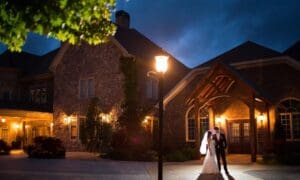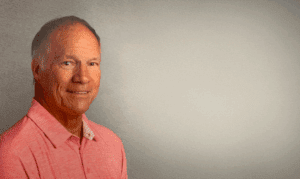On Nov. 4, 2008, something incredible happened, something that will never again allow me to predict or trust the American electorate, regardless of the great corrective that happened this Tuesday, Nov. 2, 2010.
For one, the American voter decisively elected as president a man that the widely respected, non-partisan National Journal had named the “most liberal member of the Senate” in 2007, to the left of even Barbara Boxer, Ted Kennedy, and Hillary Clinton.
As a U.S. senator, that man had co-sponsored the Freedom of Choice Act; as a state senator, he had opposed and blocked legislation to prevent healthcare to babies that survived abortions. That man also possessed remarkably disturbing radical associations and influences, which were hardly irrelevant, from Frank Marshall Davis to Bill Ayers to the Rev. Jeremiah Wright.
I could say more, but I don’t want to sound like I’m beating up President Obama. My point is simply that Americans don’t elect presidential candidates with records and backgrounds this extreme — but they did on Nov. 4, 2008.
And they did so with traditional Democrats and moderates leading the way, thinking they had elected “another Jack Kennedy” or a “give-‘em-hell-Harry Truman,” men bearing zero ideological resemblance to Obama, or, for that matter, to Harry Reid or Nancy Pelosi.
Speaking of the latter two, that same electorate gave a gigantic majority to arguably the most left-wing Congress in the history of the republic.
Yet, most amazing, that same electorate, after voting as it did, walked out of the booth and described itself to pollsters as conservative over liberal by an overwhelming margin of two to one, 40 percent to 20 percent, as it has in every poll for two decades.
That data held even throughout the start of Obama’s presidency and the peak of his popularity. A major Gallup poll conducted from January to May 2009 found more self-described conservatives than liberals not only by 40 percent to 21 percent but in all 50 states.
How could this happen? We can list the reasons: The public didn’t like John McCain. Voters were angry at George Bush and the Republicans. The economy crashed.
But it wasn’t simply negatives that prompted the public to vote as it did. First and foremost, Americans liked Obama and voted for “change,” projecting onto this appealing candidate whatever they wished. For some inexplicable reason, they didn’t understand that Obama meant “change” of the sort that he has always favored, meaning a lunge to the far left.
One figure, from the far left, who understood what happened is Mark Rudd, the 1960s radical communist who spearheaded Students for a Democratic Society and formed the Weather Underground with Bill Ayers and Bernardine Dohrn. In 2008, Rudd suddenly re-emerged, along with the likes of Tom Hayden and Jane Fonda, among a tight-knit group called “Progressives for Obama.” Rudd’s take on the 2008 election was dead on. He wrote:
“Obama is a very strategic thinker. He knew precisely what it would take to get elected and didn’t blow it. … But he also knew that what he said had to basically play to the center to not … scare centrist and cross-over voters away. He made it. … And I agree with this strategy. … Any other strategy invites sure defeat. It would be stupid to do otherwise in this environment.”
It seems fair to say that Rudd believes Obama duped “centrist” and “cross-over” voters.
Indeed, Obama got those votes, and then governed in a decidedly non-centrist way. Within mere weeks, Obama, working with the Pelosi-Reid Congress, passed an $800 billion “stimulus” package, reversed the Mexico City policy, sent taxpayer dollars to fund destruction of human embryos, filled his staff with people like Anita Dunn and Van Jones, effectively nationalized General Motors, took a record deficit from George W. Bush and exploded into a $1.6 trillion nightmare, and then began moving to centralize the greatest healthcare system mankind will ever know — just for starters.
Alas, the voting public, which somehow in November 2008 couldn’t see this coming, finally caught on, with the Tea Party out in front. The political left, rather than reach out to the Tea Party, or attempt to answer it, smeared it as a bunch of racists, fascists, Nazis, gargoyles — even as the likes of Gallup published major studies finding a perfect 50:50 split among Republicans and non-Republicans in the Tea Party.
Likewise, President Obama didn’t change course even slightly, doing a few key things to suggest he was moderate.
At the least, he should’ve publicly called for an extension of the Bush tax cuts, especially once it was clear Republicans would win back the House. Bill Clinton would’ve adjusted; Obama did not. He went over the cliff with the flag flying, and has now lost the sweeping majority he needed.
And now, this past Tuesday, Nov. 2, 2010: the backlash. Call it the great corrective. America remains that conservative country by a margin of two to one, even if it doesn’t always vote that way. This Tuesday, it did.
[Dr. Paul Kengor is professor of political science at Grove City (Penn.) College and executive director of The Center for Vision & Values (www.VisAndVals.org). His books include “The Crusader: Ronald Reagan and the Fall of Communism” and the newly released “Dupes: How America’s Adversaries Have Manipulated Progressives for a Century.”]












Leave a Comment
You must be logged in to post a comment.